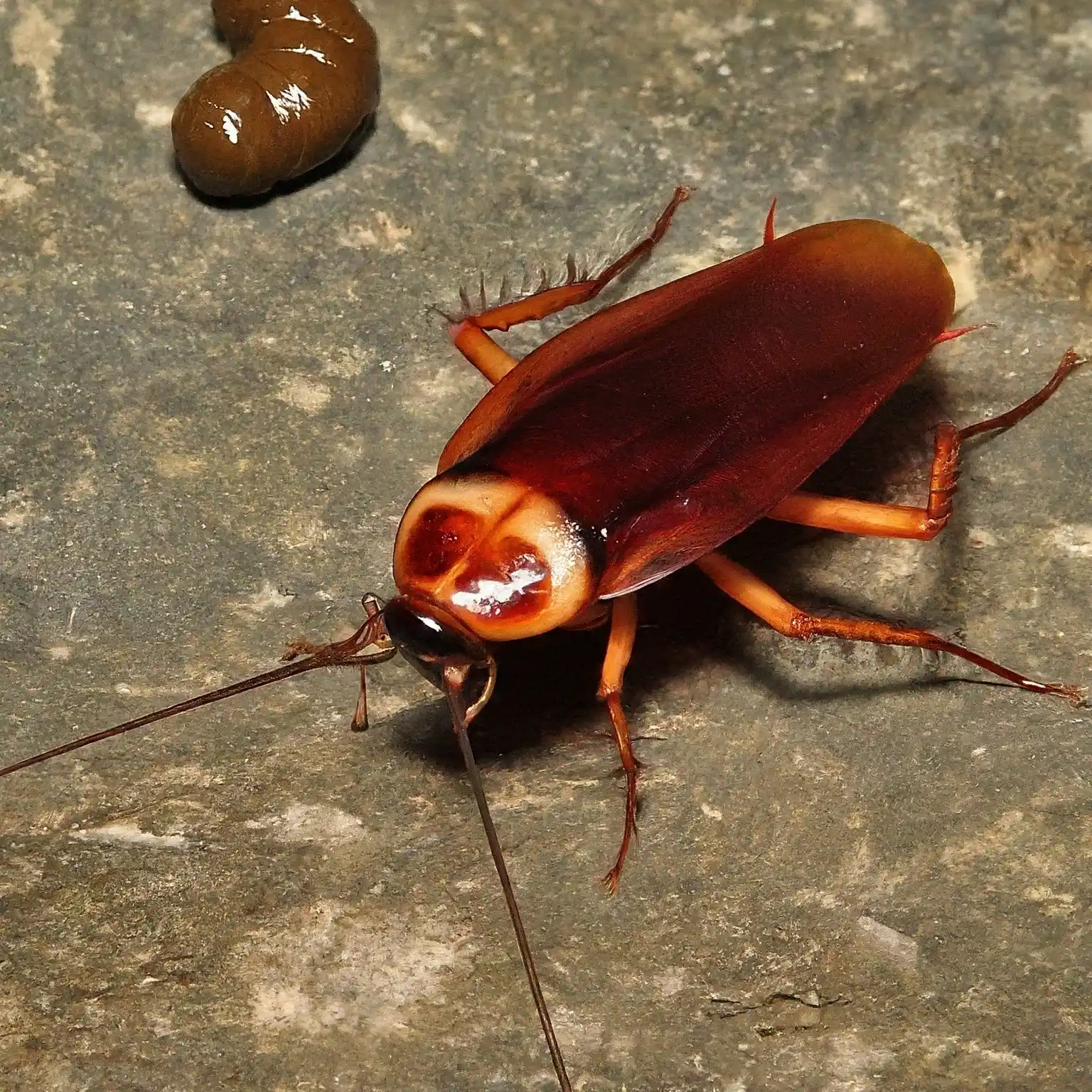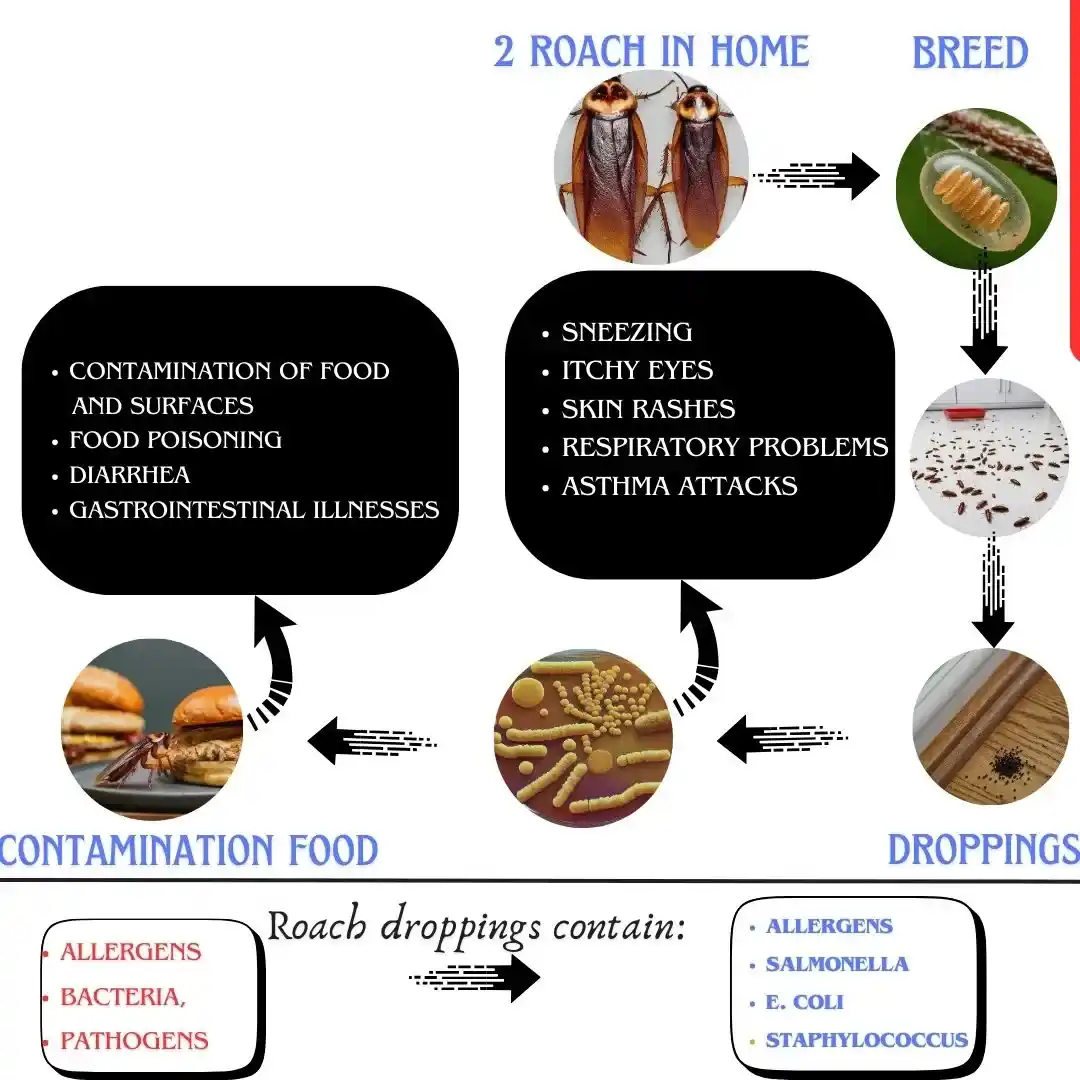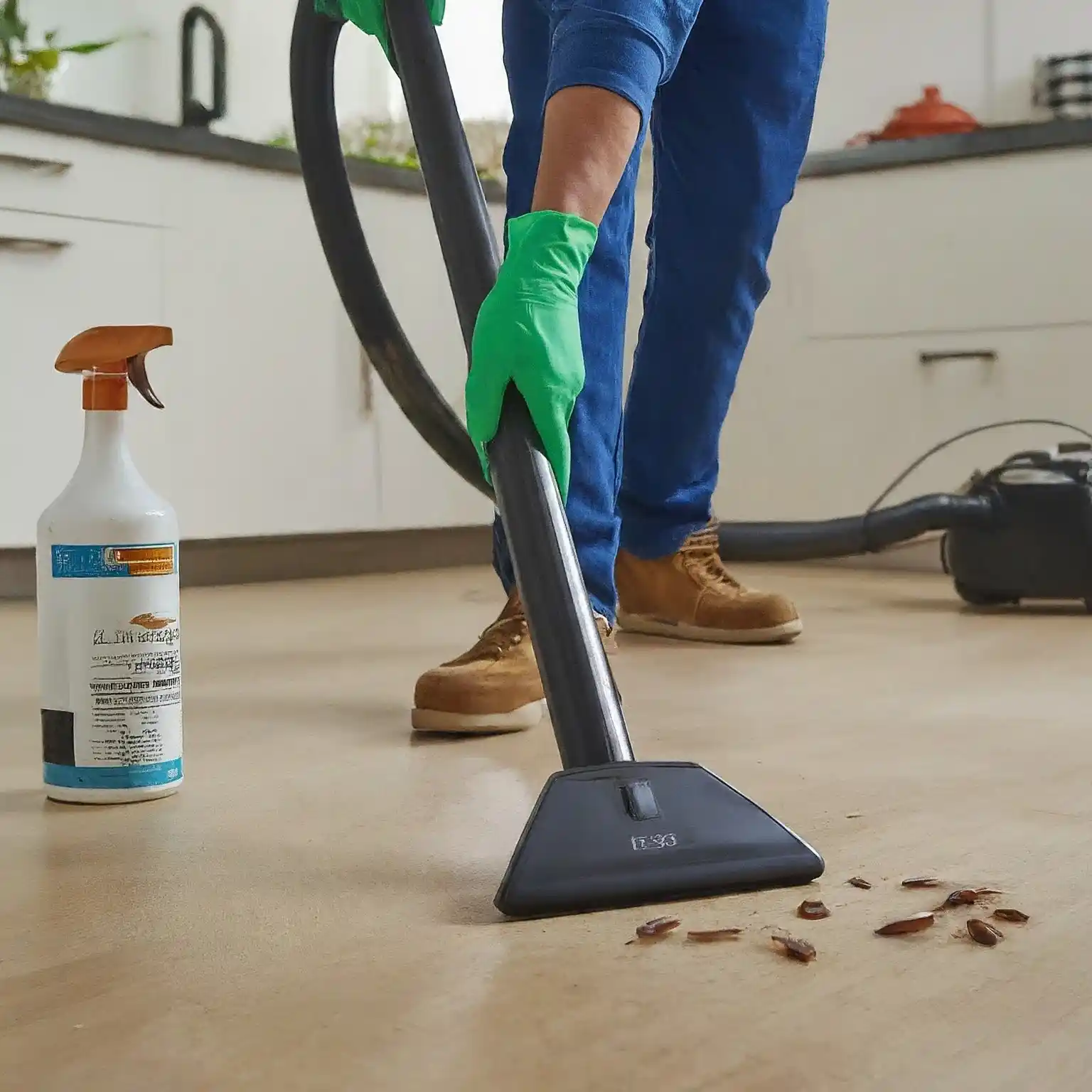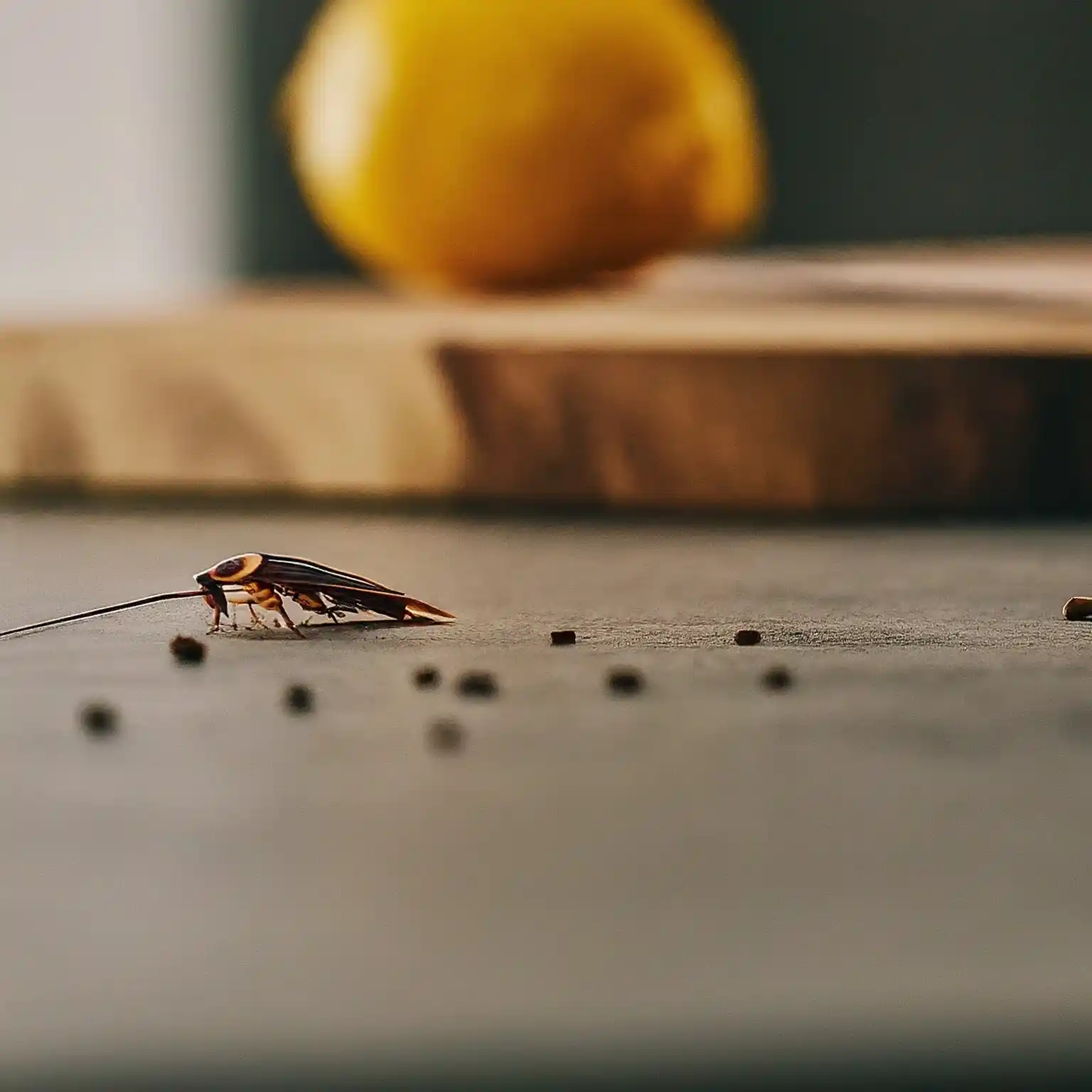Cockroach poop may appear to be a small issue, but it can serve as a serious indicator of infestation. Besides the unsightly mess, cockroach droppings pose real health risks as they harbor bacteria and allergens. In this detailed guide, we will cover everything you need to know—from identifying cockroach poop to safely cleaning it and, most importantly, preventing it. Understanding how to manage and control this issue is vital for maintaining a clean, safe, and pest-free home.
H2: What Is Cockroach Poop

Cockroach poop, also known as cockroach droppings or roach poop, is the waste material left behind by cockroaches. These pests excrete droppings that can vary significantly depending on their species and diet. Cockroach poop is often the first sign of an infestation, and being able to identify it early can help you take swift action.
Identifying Cockroach Poop by Appearance
One of the easiest ways to spot cockroach poop is by its appearance. Depending on the size of the cockroach, the poop can take different shapes. For larger species like the American cockroach:
- Size: Droppings are larger and cylindrical, with distinct ridges on them.
- Color: Dark brown or black, resembling small pellets.
For smaller cockroach species like the German cockroach, their droppings are:
- Size: Smaller, often appearing like black specks or coffee grounds.
- Color: Dark brown or nearly black, granular in appearance.
Where Is Cockroach Poop Found?
Knowing where to look is half the battle when it comes to identifying cockroach poop. Because cockroaches prefer dark, moist environments, you will often find droppings:
- In kitchens, particularly behind appliances like the refrigerator or under the sink.
- In bathrooms, where moisture is abundant, particularly near plumbing.
- In basements or attics, where clutter provides hiding spots for cockroaches.
Cockroaches also tend to drop feces along the paths they frequently travel. This habit, often referred to as “marking their territory,” helps them navigate back to food and water sources. As a result, droppings can also be found along the edges of rooms or baseboards.
Why Is Cockroach Poop Dangerous?
Cockroach poop is not just an unpleasant byproduct of an infestation; it can also pose serious health risks. This is because cockroach droppings contain bacteria, pathogens, and allergens that can impact your health.

Allergens in Cockroach Poop
One of the most common health risks associated with cockroach poop is its ability to trigger allergic reactions. The poop contains proteins that can cause allergic reactions in sensitive individuals, leading to symptoms like:
- Sneezing
- Itchy eyes
- Skin rashes
- Respiratory problems, including asthma attacks
In fact, the allergens found in roach poop are among the leading causes of childhood asthma in urban environments.
Bacteria and Pathogens in Cockroach Poop
Cockroaches often traverse dirty environments, such as garbage disposals, sewers, and even fecal matter from other animals. As a result, their droppings can carry harmful bacteria such as:
- Salmonella
- E. coli
- Staphylococcus
These bacteria can contaminate food and surfaces, posing a risk of food poisoning, diarrhea, and other gastrointestinal illnesses.
How to Safely Clean Cockroach Poop
When it comes to cleaning cockroach poop, caution is crucial. Since the droppings carry harmful bacteria and allergens, direct contact can pose health risks. Here’s a safe, step-by-step guide on how to clean up roach poop effectively.

What You Need for Safe Cleaning
Before you start cleaning, make sure to gather the necessary cleaning supplies. These include:
- Protective gloves: To avoid skin contact with droppings.
- Face mask: Prevent inhalation of allergens.
- Vacuum with a HEPA filter: This helps remove even the smallest particles.
- Disinfectant spray: Use this to clean and sanitize surfaces after removing droppings.
- Trash bags: For proper disposal of the vacuum bag and cleaning wipes.
Step-by-Step Cleaning Process
Once you have your cleaning supplies ready, follow these steps to safely clean up cockroach droppings:
- Vacuum the area: Use a vacuum with a HEPA filter to suck up the droppings. This minimizes the risk of allergens becoming airborne.
- Wipe down the surface: After vacuuming, use a disinfectant spray or cleaning solution to wipe down the surface. Make sure to focus on areas where droppings are concentrated.
- Dispose of waste properly: Once you’re done cleaning, make sure to dispose of the vacuum bag, gloves, and wipes in a sealed trash bag.
How to Prevent Cockroach Poop in the Future
While cleaning up cockroach poop is important, preventing it from happening again is even more crucial. Cockroach infestations can spread rapidly, so taking preventive measures is key to keeping your home free of both cockroaches and their droppings.
Seal Entry Points
Cockroaches enter homes through tiny cracks and crevices. Start by inspecting your home for potential entry points, including:
- Cracks in walls: Seal cracks using caulk.
- Gaps around doors and windows: Install weather stripping or door sweeps.
- Plumbing: Use mesh screens or seal gaps around pipes.
By sealing these entry points, you can significantly reduce the chances of a cockroach infestation.
Keep Your Home Clean
Cockroaches are drawn to food and moisture. Keeping a clean and dry environment makes your home less appealing to these pests. Consider these cleaning tips:
- Regularly vacuum and mop floors to remove crumbs and spills.
- Store food in airtight containers and avoid leaving dirty dishes in the sink.
- Fix leaky pipes to reduce moisture, especially in bathrooms and kitchens.
Remove Clutter
Cockroaches thrive in dark, cluttered areas where they can hide. Declutter your home by:
- Reducing excess storage in basements and attics.
- Keeping your kitchen counters clear.
- Regularly disposing of old newspapers, boxes, and other hiding spots.
Professional Pest Control: When to Seek Help
While preventive measures and DIY methods can help control a cockroach problem, a serious infestation may require professional intervention. Pest control professionals can provide more advanced and targeted treatments to eliminate cockroaches and prevent future infestations.
Pest Control Treatment Options
Cockroach poop is easy to identify; first, you can spot the droppings by their dark, coffee-ground appearance. Next, it’s important to prevent infestation by maintaining a clean environment. Additionally, learning proper cleaning tips will help you eliminate both smells and stains. Furthermore, regular inspection can protect your home from these pests. Afterward, you should take steps to seal any entry points. Moreover, addressing moisture issues can also prevent roach activity. Ultimately, with these measures in place, you’ll reduce the risk of infestations. Finally, keeping a consistent cleaning routine ensures long-term protection.
Conclusion: Take Action to Keep Your Home Safe
Dealing with cockroach poop is not just a housekeeping task, but a crucial health concern. Moreover, neglecting the issue can lead to a severe infestation. However, by learning to recognize roach droppings, you can take action. Once spotted, it’s important to clean up safely, and then implement preventive measures to avoid future issues. So, by understanding how to manage and prevent cockroach poop, you not only protect your home but also safeguard your family’s health from the bacteria and allergens these pests carry.
FAQs
Q1. What does cockroach poop look like?
A 1 : Cockroach poop varies depending on the species; however, it typically appears as small black specks, cylindrical pellets, or ridged droppings. Moreover, these droppings are often found in areas where roaches are active, such as kitchens, bathrooms, and dark, moist spaces. Because identifying roach poop early can signal an infestation, it is important to act quickly. In addition, distinguishing roach poop from other pest droppings helps in determining the best elimination and prevention strategies for keeping your home clean and safe.
Q2. Can roach poop make you sick?
A2 : Yes, cockroach poop can indeed carry harmful bacteria such as salmonella and E. coli, potentially spreading these pathogens to food and surfaces. Additionally, it may trigger allergic reactions or worsen asthma symptoms in sensitive individuals, especially children. Because of these health risks, it’s important to clean areas where cockroach droppings are found and take action to eliminate any roach infestations. Maintaining proper hygiene and taking preventative steps can help keep your home safe from these potential hazards.
Q3. How do I clean cockroach poop safely?
A3 : To clean up cockroach poop safely, wear gloves and use a vacuum equipped with a HEPA filter to avoid inhaling allergens. After vacuuming, disinfect the area thoroughly using a household cleaner. Avoid touching the droppings directly to prevent exposure to harmful bacteria and allergens that could pose health risks. These steps help ensure a safer and cleaner environment when dealing with cockroach infestations.
Q 4. Where do roaches leave their poop?
A4 : Cockroach poop is typically found near their hiding spots, often in dark and moist areas such as kitchens, bathrooms, basements, and under appliances. These locations provide cockroaches with easy access to food, water, and shelter, making them prime spots for droppings to accumulate.
Q5.How can I prevent roach infestations?
A5 : Seal entry points, maintain a clean and dry home, and minimize clutter to prevent cockroaches from finding shelter. These measures create an inhospitable environment for cockroaches, reducing the likelihood of infestations.
Related Articles:
Baby Cockroach: Identification & Elimination
You'll discover how to spot baby roaches, recognize signs of an infestation early, and find effective methods for eliminating them. Protect your home by tackling the problem at every stage."

